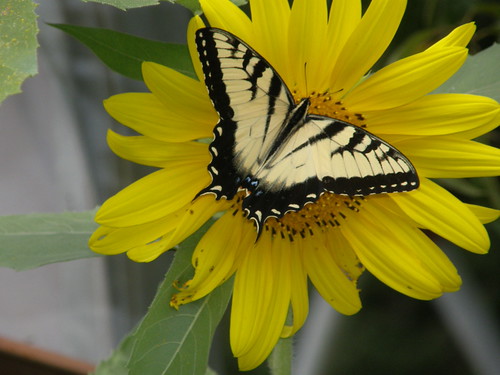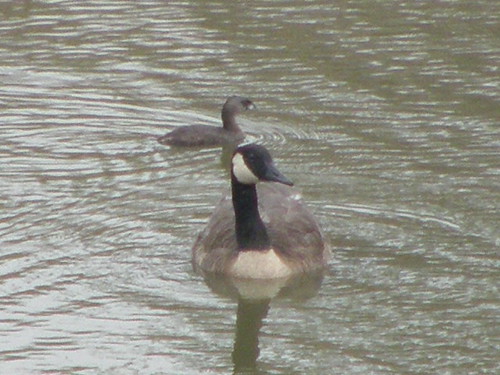Get wordless at Wordless Wednesday
Tweet
Wednesday, August 25, 2010
Wednesday, August 18, 2010
Book Review: Nightjars of the World
Tweet
Tweet
When I first heard that there was a new book coming out about nightjars, I immediately became excited. Ever since I seen my first Common Nighthawk at age 11, I have been fascinated by the nightjars. So when I got an email from the publisher's publicity department that I could receive a review copy of Nightjars, Potoos, Frogmouths, Oilbird, and Owlet-nightjars of the World by Nigel Cleere, I quickly jumped on it. And I am glad I did, as I love this book!
Princeton University Press's Nightjars of the World is a hard cover book that covers all 135 species of nightjar. It is set up on the order of a field guide, complete with range maps and biology for every species. However, due to its size and the fact that it covers every species of nightjar in the world, it would be better used as a home reference rather than a field guide in my opinion.
The wonderful color photos (over 580!) no doubt make this book. Every species is photographically represented, including some for which there is no known photos of the birds in the wild. In this case, high quality photos of museum skins are used.
This book will give many the opportunity to learn about species that they would not have known even existed previously. For example, I was blown away when I saw the photo of the awesomely cool wings of the Pennant-winged Nightjar. They look like they have streamers at the end of their wings when in flight. Another cool nightjar, the Swallow-tailed Nightjar of South America has a 16-21 inch swallow tail. There are many more cool looking birds in this book that you will want to learn about!
I also like the fact that this book covers the biology and natural history of the Caprimulgiformes (nightjars) in a way that birders will be able to understand and ornithologists will be able to appreciate. The book points out that there is still a lot of unknowns when it comes to the biology of many of the Caprimulgiformes. This book will inspire many, professionals and birders alike, to want to learn more about this mysteriously cool group of birds.
This is the kind of book that can turn someone with any interest in birds into a full fledged birder. Every birder with a passion for nightjars will want to add this book to their library. A definite must have for the amateur ornithologist.
Nigel Cleere did a fantastic job with his book Nightjars of the World, and I highly recommend it - 5 out of 5 stars!
Disclosure: I had received this book free of charge from the publisher for the purpose of reviewing. The opinions expressed are solely my own.
Saturday, August 14, 2010
My search for a Black-bellied Whistling Duck (NOT)
Tweet
With the recent reports of Black-bellied Whistling Ducks being seen around the Eastern U.S. and the one up on Lake Erie, I decided to go out and check some local ponds that no one would think to check. I struck out on a BBWD of course, but did find my first of the year Pied-billed Grebe I think. Yes, my first for the year, as I cannot remember seeing ANY so far this year. They just haven't been around. Where are they all???
Pied-billed Grebe and Canada Goose
Also, I found a Green Heron. Not a place one would expect such birds, but I have found some good birds in this pond over the years. (It is that little pond that is under the word "Eastg" and above "Clepper" on the right side of the map)
I am planning on going back out and checking some more spots that I think might be hiding something good tomorrow.
Tweet
Monday, August 02, 2010
The bird that started it all
Tweet
I have often been asked (by birders) "What bird was your spark bird?" or (by family and friends) "How did you ever get started watching birds?" I probably answered with "I don't know for sure, maybe the Ruby-throated Hummingbird" or "Watching a hummingbird". I was fascinated by many birds when I was young, so I never really put much thought into the one bird that started the ball rolling.
But as I look back, I remember one bird that I could not ID for anything. I was only 11 years old at the time and wasn't what one would call a "birder". I did not own a field guide, but I often would look at my dad's old Golden Guide to Birds. It only contained the most common or most likely to be seen birds, plus some of the pages were missing. The bird that I was seeing was not in it. I remember asking my dad and grandfather what the bird was with the response "I don't know". Back then, there was no Google, I didn't have the internet. I searched and searched to no avail. I then started on a mission to find out what bird it was that I was seeing.
I remember seeing many of them flying over the fields around my house in the evenings. I thought to myself that they must be some kind of seabird. Given their shape and flight style, I thought maybe a gull or a tern at the time. I started to look at more bird books and my grandmother bought me a membership into the Cincinnati Nature Center. Before I knew it, I had become a birdwatcher. Oh yeah, that bird?
 Common Nighthawk / Bob Hines, USFWS
Common Nighthawk / Bob Hines, USFWS
Tweet
But as I look back, I remember one bird that I could not ID for anything. I was only 11 years old at the time and wasn't what one would call a "birder". I did not own a field guide, but I often would look at my dad's old Golden Guide to Birds. It only contained the most common or most likely to be seen birds, plus some of the pages were missing. The bird that I was seeing was not in it. I remember asking my dad and grandfather what the bird was with the response "I don't know". Back then, there was no Google, I didn't have the internet. I searched and searched to no avail. I then started on a mission to find out what bird it was that I was seeing.
I remember seeing many of them flying over the fields around my house in the evenings. I thought to myself that they must be some kind of seabird. Given their shape and flight style, I thought maybe a gull or a tern at the time. I started to look at more bird books and my grandmother bought me a membership into the Cincinnati Nature Center. Before I knew it, I had become a birdwatcher. Oh yeah, that bird?
 Common Nighthawk / Bob Hines, USFWS
Common Nighthawk / Bob Hines, USFWSThat's right, the Common Nighthawk (Chordeiles minor). I don't remember how or when exactly I came to the conclusion as to what those odd, crepuscular birds were that I was seeing. I only remember there were many of them and that they were quick fliers.
Today, I don't see nearly as many as I did when I was younger. I remember watching them for long periods of time as they migrated south around the end of August. They seemed as if they would never stop coming, a constant stream of birds.
I also later participated in a project designed to learn more about the Common Nighthawk's migration called Project Nighthawk (from 1999-2005). This also heightened my interest in the Common Nighthawk. Participation in this project put me outside for the last two hours of daylight of every day from mid-August till I stopped seeing nighthawks. As it is almost that time again, I still look forward every year to seeing the large, migrating flocks of Common Nighthawks on their southward journey!
Today, I don't see nearly as many as I did when I was younger. I remember watching them for long periods of time as they migrated south around the end of August. They seemed as if they would never stop coming, a constant stream of birds.
I also later participated in a project designed to learn more about the Common Nighthawk's migration called Project Nighthawk (from 1999-2005). This also heightened my interest in the Common Nighthawk. Participation in this project put me outside for the last two hours of daylight of every day from mid-August till I stopped seeing nighthawks. As it is almost that time again, I still look forward every year to seeing the large, migrating flocks of Common Nighthawks on their southward journey!
Subscribe to:
Posts (Atom)





